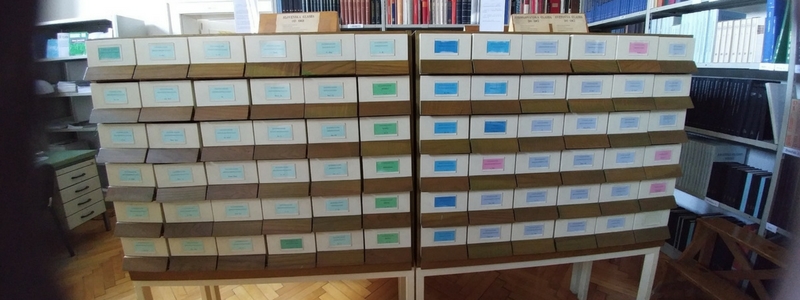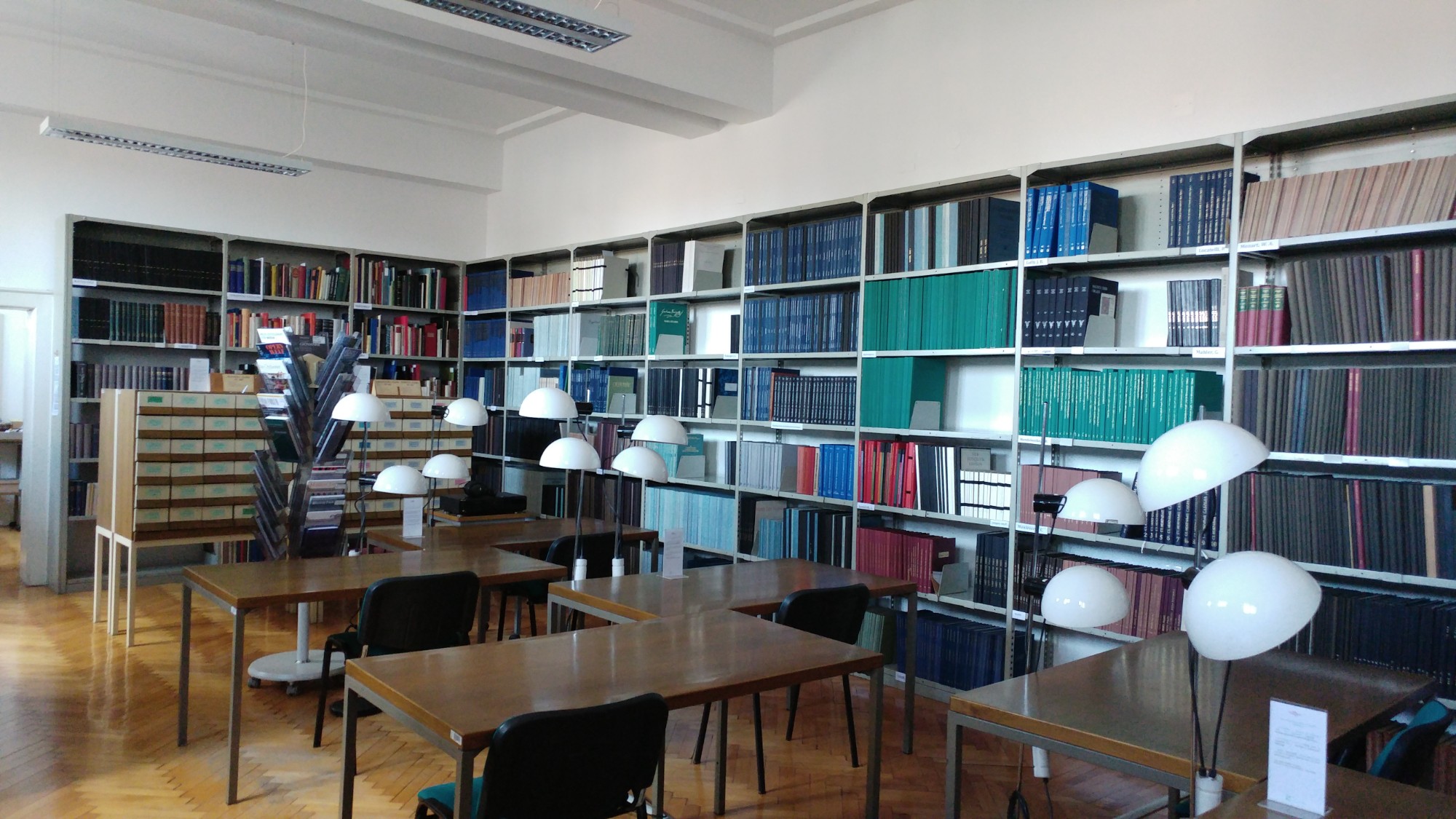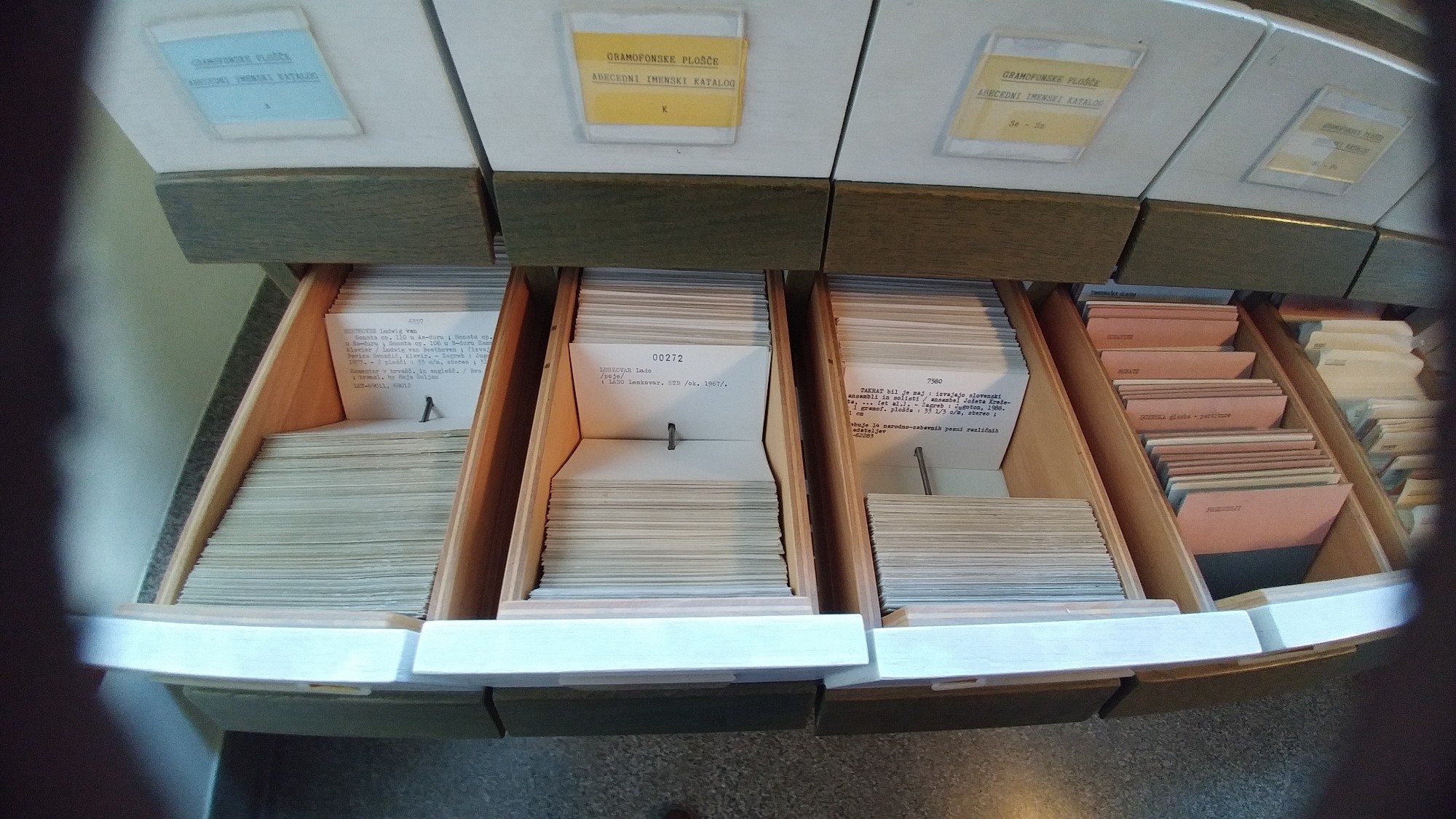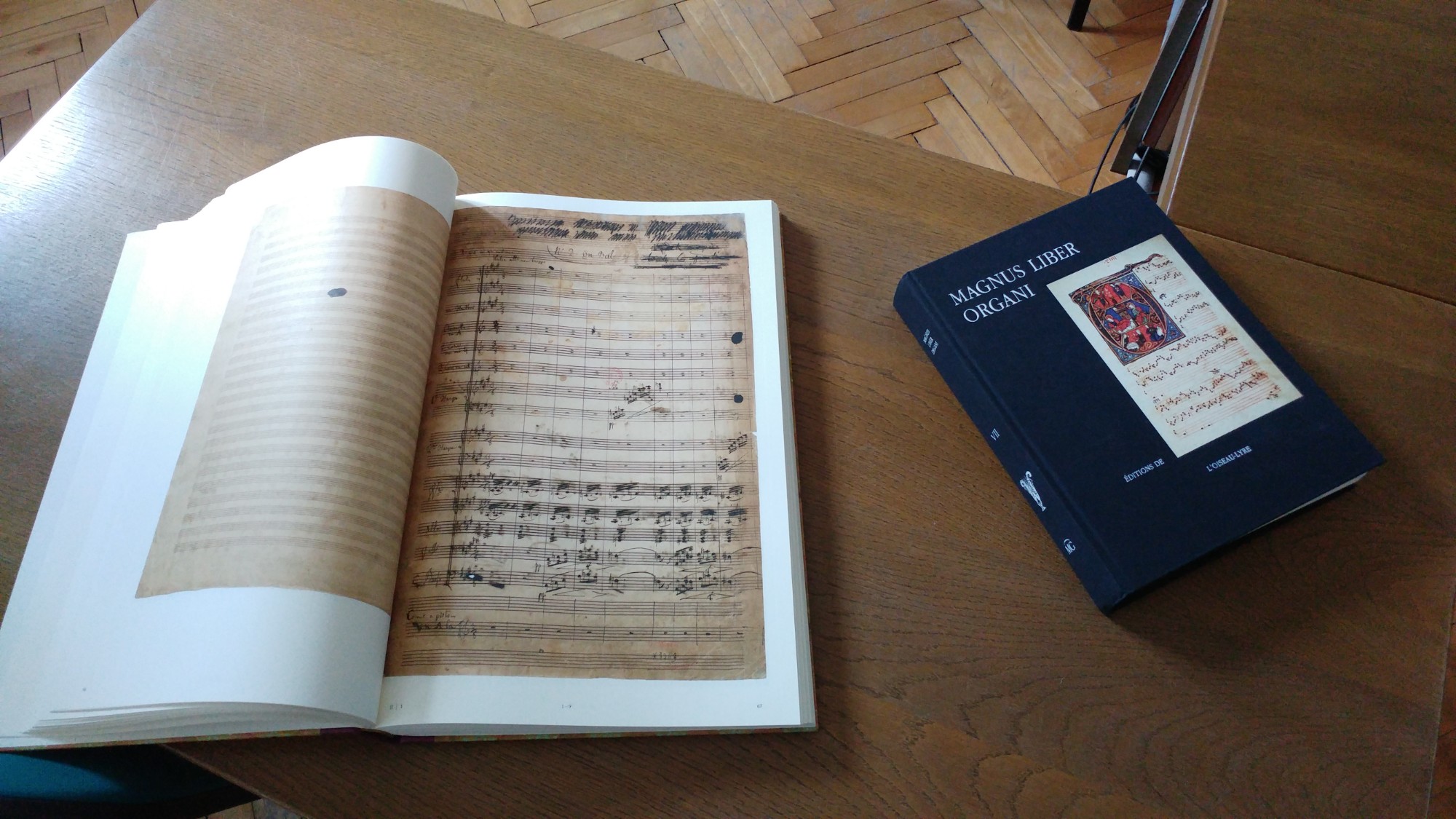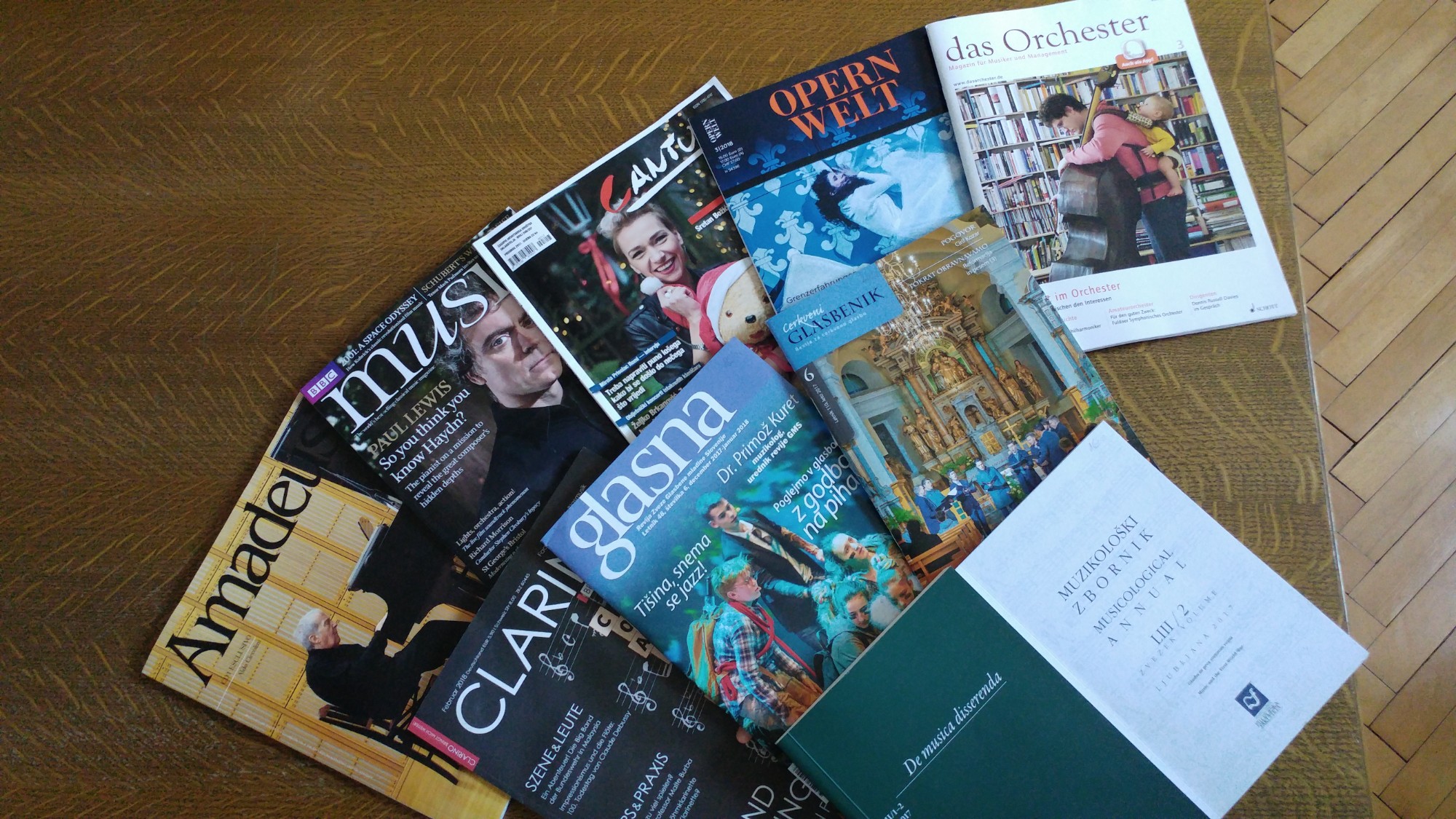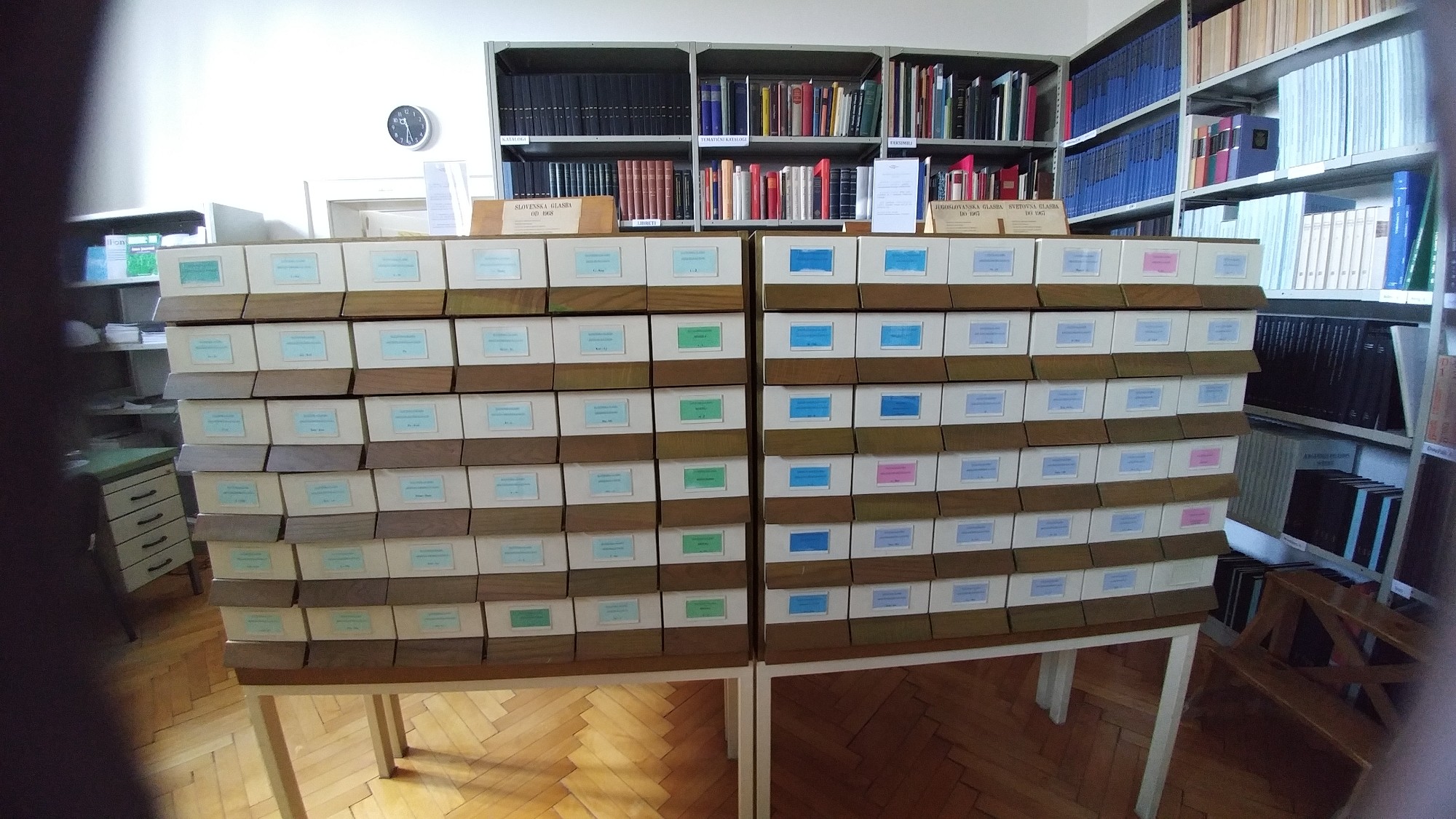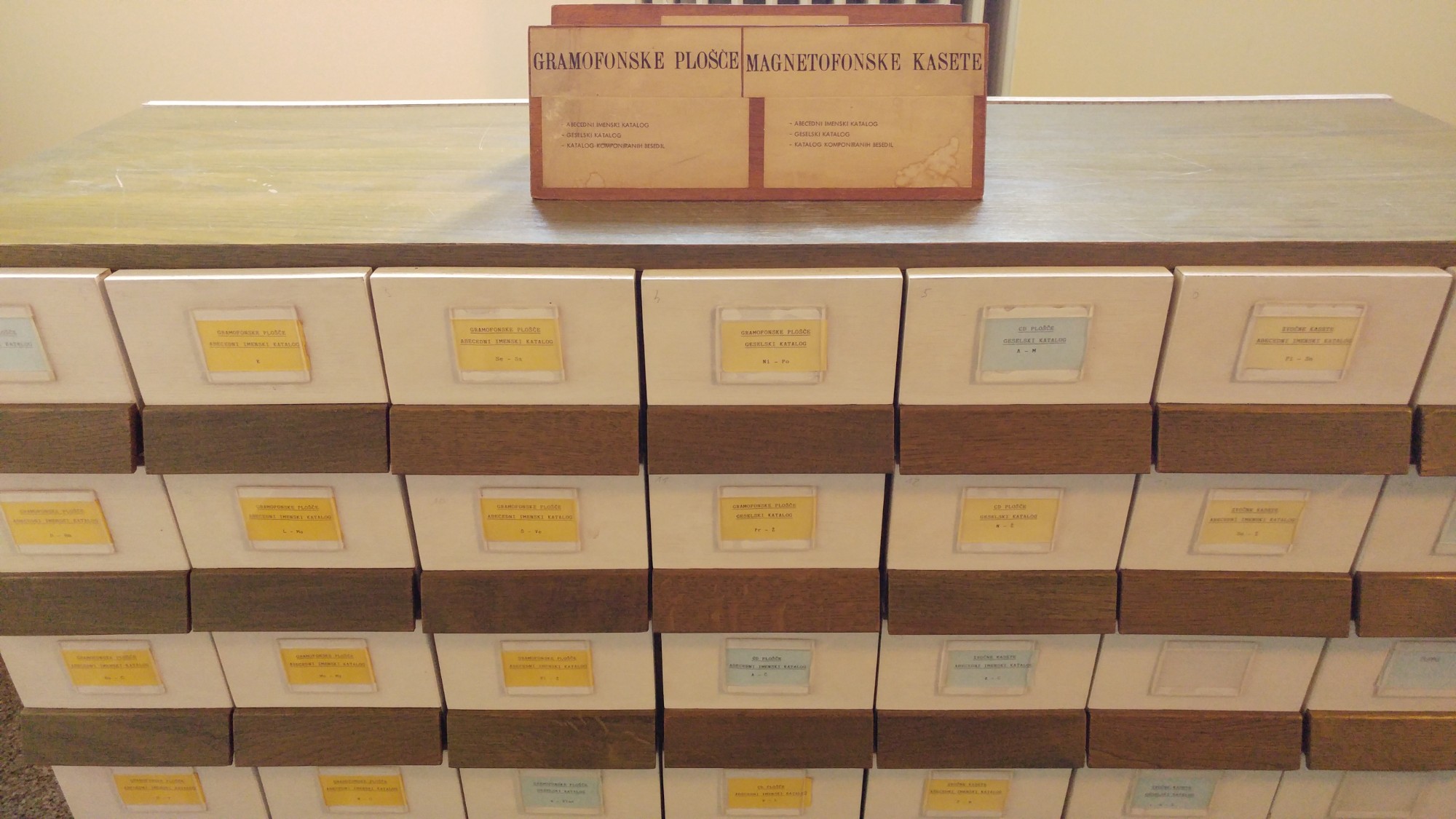In 1948, a musical collection was instated as a subdivision of the National and University Library’s Special Collections Division. Forming part of the National Library’s holdings, the department provides for collecting, processing, maintaining, providing access to, as well as safekeeping and preserving the core national collection of library materials in Slovenian, about Slovenia and Slovenians, about Slovenian authors, Slovenian record companies, members of the Italian and Hungarian national minorities, the Roma community and other ethnic minorities living in Slovenia (i.e. the National Library’s core holdings related to national studies known as slovenika). By compiling current and retrospective Slovenian national bibliography and other databases, the subdivision provides access to information on library materials and maintains bibliographic control over print and digital publications that fall under the slovenika heading. Being a university library, in addition to its basic mission, the institution contains the core collection of the national and foreign scholarly literature used, or consulted in, educational and scientific research at the University of Ljubljana.
The musical collection of the National and University Library (NUK) compiles print and manuscript sheet music, music audio recordings and documentary materials about Slovenian music creativity, composition and performance, as well as reference and bibliographic literature concerning musicians and musical works. Printed scores and manuscripts make for the bulk of the collection, followed by music audio recordings, programme notes, written and pictorial archives of music magazines, music societies and institutions, Slovenian musicians’ correspondence and other documentary materials.
The collection of printed sheet music falling under slovenika constitutes the central national compilation of published works by Slovenian composers, artists working at home or abroad as members of a Slovenian national minority or expatriates. It operates in conformity with the statutory provisions introduced over 200 years ago about a deposit library compiling and permanently archiving a compulsory copy of Slovenian publications: issued, published, produced or distributed in Slovenia. This mission is complemented by keeping track of, and acquiring, publications issued abroad. NUK also houses a fairly comprehensive collection of late twentieth-century jugoslavika printed sheet music, works published in former Yugoslavia.
Countless works by foreign composers are available as instructive editions, study scores or piano extracts. NUK systematically compiles a collection of scholarly-critical editions of collected works by the world’s greatest classical composers and anthological collections of monumental music works, which constitute reference sources for study, scientific research and music performance. The Library’s rare or unique editions from the 16th, 17th and 18th centuries include printed sheet music by Martin Luther, Jacobus Handl Gallus, Giovanni Pierluigi da Palestrina and Orlando di Lasso, music treatises by Athanasius Kircher, Johann Joseph Fux and Nicolaus Listenius, as well as music lexicons by Johann Gottfried Walther and Ernst Ludwig Gerber. The NUK music collection also holds a transcript of Beethoven’s Sixth Symphony, with the composer’s own corrigenda, and transcripts of instrumental and vocal parts of two masses by Haydn, reproduced by the composer’s copyist, Johann Elssler.
Over a thousand units of manuscript sheet music housed by the National Library date from mid-18th century to the present day, and include Slovenian composers’ autographs, various transcripts of their works, as well as transcripts of works from the world music legacy: compositions performed over the past centuries in Slovenian concert and opera venues. Legacies and bequests of Slovenian composers and musicians primarily comprise manuscript music scores in the form of drafts, fair copies, transcripts and corrections, as well as printed sheet music containing comments on performance or signatures. Many of these legacies provide extensive material for documentary records, from personal documents and correspondence to pictorial, audio and library materials that bear testimony to their lives and creativity. Some of the largest corpora of music works acquired over the past decades include the legacies of the Ipavec brothers, Viktor Parma, Vasilij Mirk, Emil Adamič, Slavko Osterc, Marij Kogoj, Lucijan Marija Škerjanc, Matija Bravničar, Primož Ramovš, Marijan Lipovšek, Uroš Krek, Pavle Merku and others.
The collection of music audio recordings consists of published music audio recordings in various formats falling under the slovenika heading. So far, a small part of audio recordings in non-durable formats, which form part of cultural heritage, has been digitalised and thus protected and furnished with permanent preservation. The collection of old audio music recordings (1909–1955) includes recordings of Slovenian and foreign music from the period before the advent of mass produced gramophone records. The collection contains 86 vinyl records released predominantly on foreign labels (Columbia, Victor Talking Machine, RCA Victor, His Master’s Voice, Edison Bell Radio, Odeon, Homocord and Polydor, Pathe, Cetra); the Slovenian labels include Elektra and Elektroton, and the featured Yugoslav record companies are Edison Bell Penkala and Jugoton. Recordings by vocal soloists form the bulk of this collection, such as those by stage actress Avgusta Danilova, who recorded for Columbia Records in 1918 in New York, and subsequently also for the Victor Talking Machine recording company, as well as recordings by Josephine Lausche and Mary Udovic, singers who enchanted American audiences with popular arrangements of Slovenian folk songs. The popular polka has been preserved on the Hoyer Trio and Frank Yankovic records. Especially valuable are the recording by the military Band of the Dravska Division, which includes the composition Pozdrav Gorenjski (Salute to Gorenjska/Upper Carniola) by Viktor Parma, made in all probability around 1920, and the recording by the Kmečka godba Ljubljana Country Band, which released its music on the Jugoton label after the war. Shellac records were digitalised, and are available for playing via the digital online portal dLib. A valuable resource for the study of the national musical past, the collection provides an insight into historical trends, in terms of period music performance, reception and style, and offers a platform for research into the historical, culturological and publishing importance and role of Slovenian music in discographic production, initially foreign and then also national editions.
The reference library contains a selection of music encyclopaedias, lexicons, thematic catalogues, bibliographies, historical overviews and guidebooks to various music genres, facsimiles of old theoretical treatises and some manuscripts by world music classics. Current volumes of over twenty national and international periodicals are available to users in the reading room.
Music and audio materials are bibliographically catalogued in accordance with currently applicable bibliographic and cataloguing standards. Bibliographic records on materials are contained in card catalogues referring to a specific type of material, and in the COBISS+ digital catalogue.
Card catalogues are kept on premises designated for the music collection. The catalogues of music materials relating to printed music acquired until 1967 or 1995 and of manuscripts acquired until 1967 or 2005 incorporate author and subject catalogues. The audio recordings catalogue lists gramophone records and audio cassettes acquired until 1994. The catalogue of documentary materials (Chronicle) includes programme notes, newspaper clippings and lists of works, as well as personal documents, letters and other non-musical manuscript materials forming part of the legacies of Slovenian composers and archives of music societies acquired up to 2004. Together with the catalogue of pictorial materials (Iconography), the Chronicle’s sole aim is to provide information on the existence of such materials.
